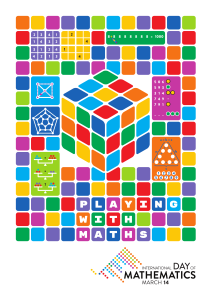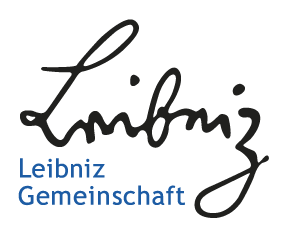Each Block Fits on the Previous One: The Stacks Project and Collaborative Publishing in Mathematics
Each year, on March 14th, the International Day of Mathematics is being observed, together with Pi Day. Also in this blog, we have acknowledged these occasions several times over the last few years.

This year, IDM314 has adopted the nice motto “Playing with Maths”. But what is the connection to so-called stacks in mathematics?
No, we are not talking about stacks built of toy blocks here. Algebraic stacks, like many concepts in algebraic geometry are rather abstract, and can only be explained by referencing quite a bit of maths terminology.
Even the origin of the name is not very clear, as Dan Edidin has detailed in his column “What Is … A Stack”.
The playful image of the toy block stack, however, fits the Stacks Project very well: Since 2008, mathematicians gathers their knowledge of and enthusiasm for algebraic stacks in this remarkable community effort.
The Stacks Project

It all started with the idea of a small group of people to sit together to write an introductory text to allow students to approach the research literature on algebraic stacks. Since long, this has evolved into an extensive online research and reference compendium on algebraic geometry.
This reflects in the Stacks Project’s “about” statement: “an open source reference work and textbook on algebraic stacks and the algebraic geometry needed to define them“. And one that does not only reach towering heights of abstraction, but also stands on solid foundations of contributions and proofs that build on top of one another.
A living document with currently 116 chapters and 7,500 pages
Over the years, the Stacks Project has grown in hight, breadth and depth. Currently, it features 116 chapters totalling at over 7,500 pages. As a hypertext meant to be read online, the Stacks Project makes frequent use of links and references between its various segments called tags. This structure allows for the flexible rearrangement and adaption of this living document, e.g. to accommodate for the contribution of new co-authors.
New contributors welcome
According to the Stacks Project website, 554 persons have contributed to it up to now. And new co-authors are very welcome, as are comments and feedback to the editorial office. Whoever shares its mission is invited to come and play along – in the spirit of constructive criticism and an open scientific exchange.
After all, its open source nature might be the most defining aspect of the Stacks Project – and the one that sets it apart from traditional scientific literature, especially textbooks. The high prices and e-book licence fees (repeatedly, with each new edition) that are so typical advanced textbooks are nowhere to be found. On the contrary, not only can you read the Stacks Project for free, the same holds for its Latex source code, via Github. Which shows how collaborative Open Science projects can grow high and tall.
Further information and research starting points
- Search for “Algebraic Stacks” in the TIB-Portal
- Search for “Algebraic Geometry” in the TIB AV-Portal (Video publications from 2020 onwards)
Holger Israel ist promovierter Astrophysiker und Fachreferent für Mathematik an der TIB. Er beschäftigt sich außerdem mit automatisierter Sacherschließung und Text Data Mining.
... arbeitet seit Mai 2020 an der TIB mit Schwerpunkt Wissenschaftskommunikation besonders als Community Manager für das TIB AV-Portal. // ... has been working at the TIB since May 2020, specialising in science communication, especially as Community Manager for the TIB AV-Portal.



